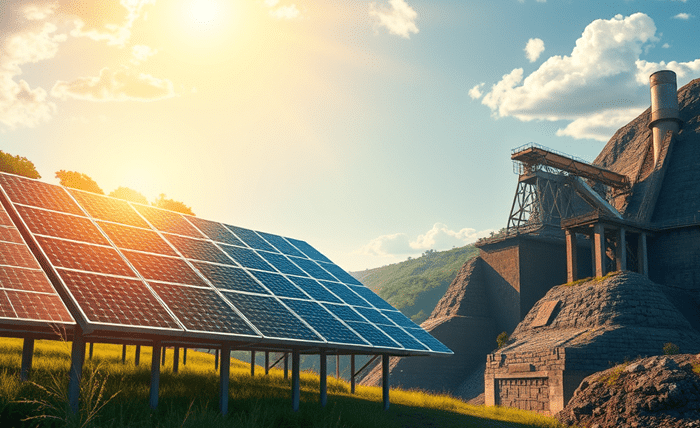
It’s 2025, and the need for a greener and cleaner future is each country’s top priority. To motivate taxpayers and organisations to adopt better and more eco-friendly energy sources, new policies have been introduced. One such initiative is the Energy Community Tax Credit Bonus. It is one of the understated yet powerful provisions under the U.S. Inflation Reduction Act of 2022. Its main aim is to uplift the historically energy-reliant or economically disadvantaged communities with some extra bonus for their eco-friendly ways.
This new provision has made many renewable energy companies ask the question: What exactly is the Energy Community Tax Credit Bonus? In this article, we’ll help you learn more about this topic.
What is the Energy Community Tax Credit Bonus?
The energy community tax credit bonus is an additional 10% bonus on top of the base layer of Investment Tax Credit (ITC) and Production Tax Credit (PTC). Under this provision of the IRA, project developers who locate or develop a clean energy project such as solar, wind or others in an energy community are eligible for this bonus. These taxpayers can claim a higher tax credit, which helps fuel your project financially.
On the plus side, the communities that were once dependent on fossil fuels get a much cleaner and safer energy access.
What Qualifies as an Energy Community?
IRA has advised that a project is qualified for this bonus if it is located in one of these three communities:
Brownfield Site
- As defined in the Comprehensive Environmental Response, Compensation, and Liability Act of 1980 (CERCLA), a brownfield is a site or real property that is contaminated by hazardous materials or pollutants. It also includes “mine-scarred land” as defined in 42 U.S.C.
- It further clarifies that this category includes properties where the redevelopment, expansion or reuse is complicated due to the presence or potential presence of hazardous materials. Furthermore, to qualify as a brownfield site, it must be previously identified by federal, state or tribal resources as a hazardous affected site through a site assessment.
Coal Closure Area
A coal closure census tract is a geographical area or adjacent sites in which:
- A coal mine closed in 1999.
- A coal-firing electric generating unit has been retired since 2009.
Statistical Area
A statistical area includes both Metropolitan areas (MSAs) and Non-Metropolitan areas (non-MSAs). However, this geographical area must fulfil two criteria:
- At any time after December 31, 2009, the area has a direct employment rate of at least 0.17% in fossil fuel industries or has 25% or greater local tax revenue related to the extraction, storage, transfer or processing of coal, oil or natural gas.
- The area has an unemployment rate above the national unemployment rate of the country in the previous year.
The scope of the unemployment rate is determined by the ten NAICS codes:
| NAICS Code | Industry Description |
| 211 | Oil and Gas Extraction |
| 2121 | Coal Mining |
| 213111 | Drilling Oil and Gas Wells |
| 213112 | Support Activities for Oil and Gas Operations |
| 213113 | Support Activities for Coal Mining |
| 2212 | Natural Gas Distribution |
| 23712 | Oil and Gas Pipeline and Related Structures Construction |
| 32411 | Petroleum Refineries |
| 4861 | Pipeline Transportation of Crude Oil |
| 4862 | Pipeline Transportation of Natural Gas |
Which Tax Credits are Eligible for the Energy Community Credit Bonus
IRA has specified four tax credits that are eligible for the Energy Community Tax Credit Bonus. The limit to the bonus is also specified based on different criteria. Here are the four credits allotted:
| Section | Credit Type | Bonus Amount (for qualifying energy communities) |
| Section 45 (PTC) | Production Tax Credit | Adds 10% to the base credit amount |
| Section 45Y (CEPTC) | Clean Electricity Production Tax Credit | Adds 10% to the base credit amount |
| Section 48 (ITC) | Investment Tax Credit | Adds 2% or 10%, depending on compliance with wage and apprenticeship requirements |
| Section 48E (CEITC) | Clean Electricity Investment Tax Credit | Adds 2% or 10%, depending on compliance with wage and apprenticeship requirements |
Due Diligence
Here are some key compliance tips to help you earn that extra credit bonus after confirming your project is located in one of the three eligible community types:
- Maintain accurate documentation proving your project is in an energy community.
- Comply with prevailing wage and apprenticeship requirements if your project is over 1 megawatt in capacity.
- As guidance continues to evolve, project developers should consult tax professionals and monitor IRS updates to ensure compliance.
Conclusion
The new guidance and bonus credits from the IRA are a great opportunity for tax attorneys and their clients to earn extra credit for their solar or wind plant. This double-benefit provision will reduce the burden on the taxpayers and the renewable energy projects and put a giant step towards a greener USA future.




